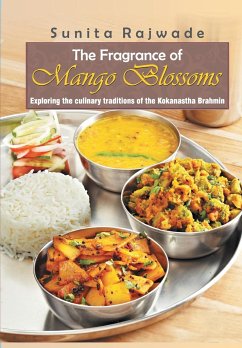My earliest memory is of the pressure cooker hissing away as my grandmother got the lunch ready. This terrifying hiss would be accompanied with an unforgettable aroma which spread all over the house and lingered on long after the hissing stopped. The distinct fragrance of Ambemohar rice (Mango Blossom rice) is typical in Maharashtrian households who love their rice soft and sticky. This small grained rice is rounded and brittle and grows along the foot hills of Western Maharashtra. With globalisation being the new mantra, there is an increased awareness about Indian food. This is largely due to the emergence of a new breed of Indian restaurants that has broken free of the traditional stereotype of sleaze and grease claiming to be ?Taj Mahals? and ?Bombay Palaces? serving high quality food. Several eateries serving less well-known regional cuisines such as idli and dosa, Goan balchao, Bohri curry, Hyderabadi biryani and wonder of wonders even some vegetarian fare, have now made Indian food chic and trendy. But, despite transcending the threshold of tandoori chicken, samosa and curry-rice, the food eaten by my community remains a mystery to most of my compatriots, as it does to the rest of the world. This is not surprising really because we are known to be a people who value our space, closely guard our privacy and very rarely serve our traditional cuisine to outsiders. Another reason for our cuisine remaining unfamiliar to most is the fact that our everyday home cooking has changed thanks to urbanisation, the breakdown of traditional joint families, and with globalisation blurring cultural identities. Spices from the North and South have transformed our traditional way of cooking, and have changed forever the dal and rice our grannies used to cook. In addition, our own forays into the big, wide world have introduced our palates to myriad tantalising tastes, rendering our typical food boring and bland by comparison. We have abandoned our traditions and completely identified with the ?modern? world. Regrettably, we are more comfortable with pizzas and pastas than puri and bhaaji. Thus, while many of us may not know much about Chaturthi and Ekadashi, we will happily tell you when Mother?s Day will be this year! But, there are still a few of us around who sometimes remember things from the past ? the slowly vanishing tastes of our childhood and festivals celebrated in the traditional way. Sadly, not only are these fading memories, but they face the threat of vanishing completely as there are now fewer and fewer people who remember the past, a fact brought home to me when I actually started writing out traditional recipes for my own daughters to follow. Not only were certain foods unfamiliar to them, but they had no idea of how and why certain festivals are celebrated. I realised that there were several things that I myself didn?t know, and began to look to an older generation to help me out. And I soon found that most of our grandmothers have either passed away, or are unable to remember, and our mothers have often been too involved in living in modern times to recollect what it was like when they were growing up! It occurred to me that the source of recipes and folklore was slowly depleting, and that there was a need to record a tradition that had hitherto been passed down from generation to generation just by word of mouth. Thus a search for recipes changed into a journey seeking to record the customs and traditions of my community. As I said earlier, this is not a compendium of all the Kokanastha customs, rituals and recipes. The information that I have gathered regarding the customs and rituals is from friends and relatives. I havemade some comments about our community but not with the intention of offending any one and apologise for hurting any sentiments albeit inadvertently. Please treat this book as an affectionate commentary on the customs and food of our community. Happy eating and happy reading! ? Sunita Rajwade 2014
Hinweis: Dieser Artikel kann nur an eine deutsche Lieferadresse ausgeliefert werden.
Hinweis: Dieser Artikel kann nur an eine deutsche Lieferadresse ausgeliefert werden.








